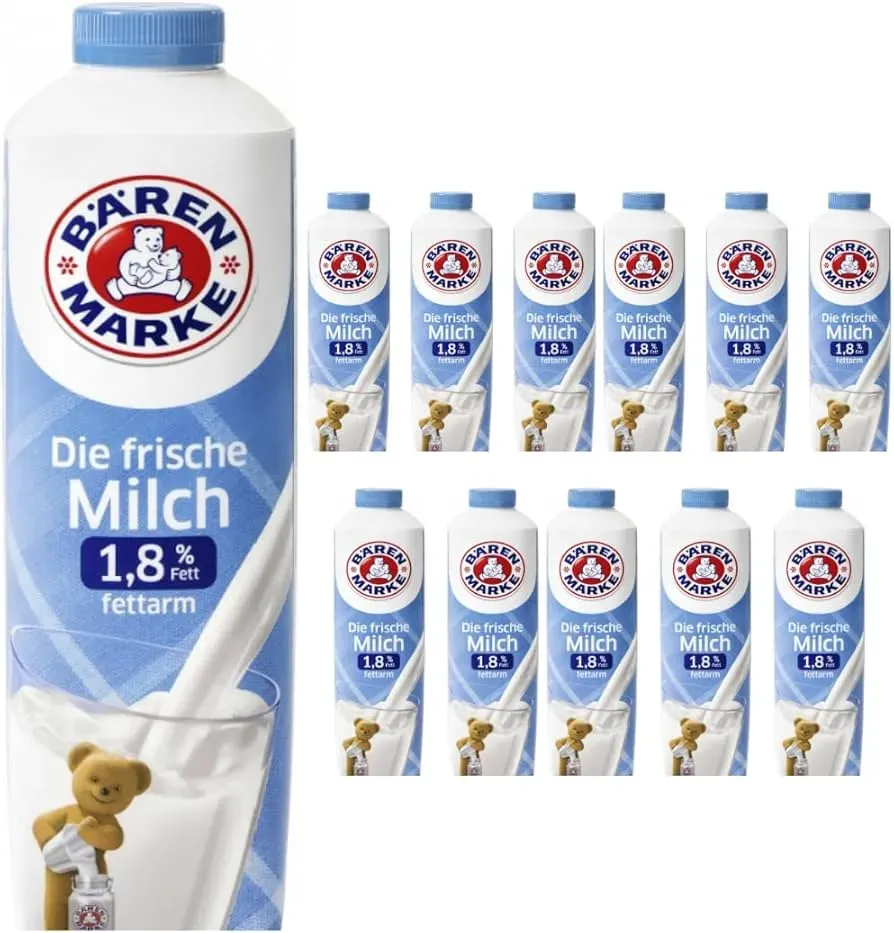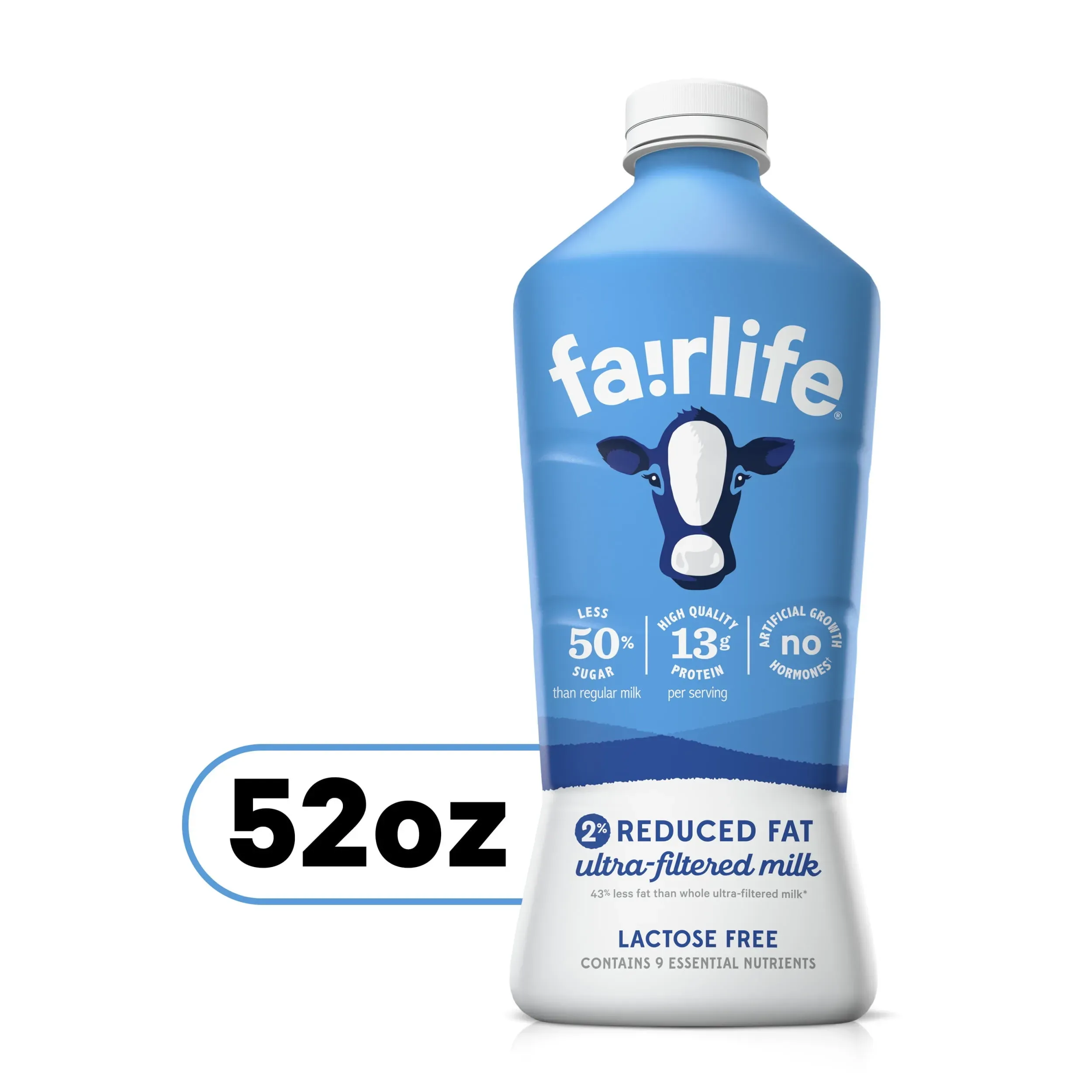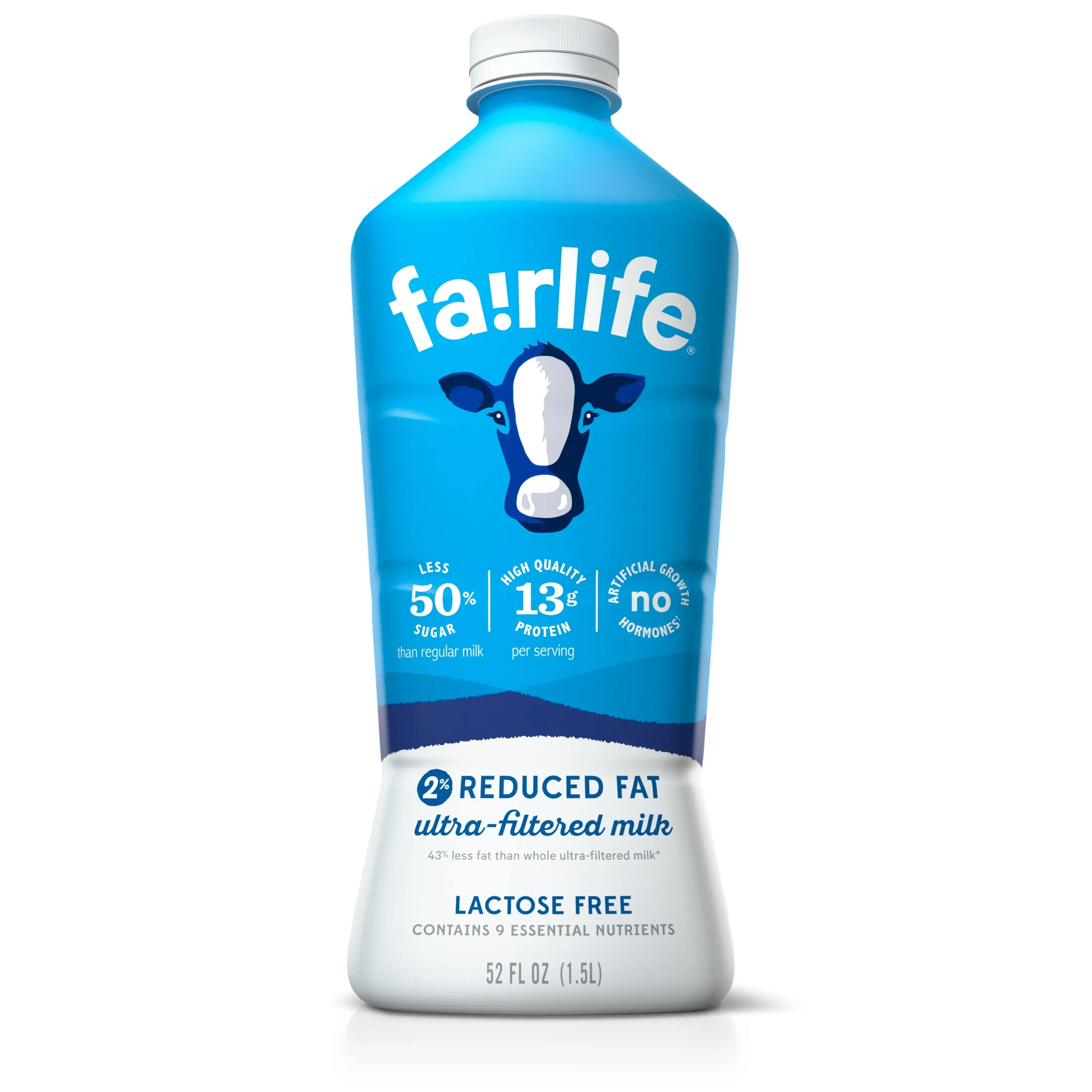Table of Contents
Trying to cut down on fat without giving up milk? You're not alone.
Why Choose Low Fat Milk Brands?
Why Choose Low Fat Milk Brands?
Cutting the Fat, Not the Flavor
So, you're eyeing those cartons labeled "low fat" or "skim" and wondering, "Why choose low fat milk brands in the first place?" It's a fair question, especially if you're used to the richer taste of whole milk.
The primary driver for many is simply reducing dietary fat intake.
Whole milk has around 3.25% milkfat, 2% has... well, 2%, 1% clocks in at 1%, and skim milk is essentially fat-free, typically less than 0.5%.
Swapping whole for a lower-fat option can significantly cut down on saturated fat and calories over time, without sacrificing the protein, calcium, and vitamin D that milk provides.
Think about it: daily cereal, coffee, or just a glass can add up.
Making this one simple switch is a tangible step towards a healthier diet for many people.
Beyond Just Calories: Other Considerations
But reducing fat isn't the only reason people gravitate towards low fat milk brands.
Some folks genuinely prefer the lighter texture and cleaner taste of 1% or skim milk.
They find whole milk too heavy, especially in things like smoothies or cooking.
For others, it's about specific dietary needs or preferences.
Maybe you're lactose intolerant but still want milk; many low-fat options come in lactose-free versions.
Or perhaps you're looking for organic options, which are widely available across different fat levels, including low fat.
It's less about deprivation and more about finding a dairy option that fits your health goals and your palate.
- Lower saturated fat intake
- Reduced calorie count
- Lighter texture and taste for some
- Availability in lactose-free versions
- Organic and fortified options readily available
- Maintains essential nutrients like calcium and protein
Comparing Popular Low Fat Milk Brands
Comparing Popular Low Fat Milk Brands
Navigating the Skim vs. 1% Debate
Alright, let's get into the nitty-gritty of low fat milk brands. You've decided to go low-fat, but now you're faced with 1% and skim. What's the real difference beyond the obvious fat percentage?
Skim milk, often called fat-free, removes virtually all the milkfat, leaving behind a thinner texture and a taste that some describe as less rich or even slightly watery compared to whole milk.
It's the lowest calorie option and still packs the same protein and calcium punch, often fortified with Vitamins A and D to make up for fat-soluble vitamins lost with the fat.
Then there's 1% milk, which retains just that – 1% fat. This small amount of fat actually makes a noticeable difference in texture and mouthfeel.
It feels a bit creamier than skim and has a slightly more familiar dairy flavor for those transitioning from 2% or whole milk.
Choosing between them often comes down purely to personal preference regarding texture and how sensitive your palate is to the absence of fat.
Beyond Fat: Organic, Lactose-Free, and More
But the world of low fat milk brands isn't just about the fat percentage.
You've got organic options, promising milk from cows not treated with synthetic hormones or antibiotics and often with access to pasture, which some argue impacts the milk's flavor and nutrient profile.
Then there are lactose-free low fat varieties, where the lactose sugar is broken down with an enzyme, making it digestible for those with intolerance, without changing the fat content.
Ultra-pasteurized (UP) milk also pops up frequently in the low fat section; heated to a higher temperature, it lasts longer on the shelf but can have a slightly "cooked" flavor that some people don't care for.
Considering these factors helps narrow down the field among the many low fat milk brands available.
Here's a quick look at some types you'll encounter:
- Skim Milk: <0.5% fat, thinnest texture, lowest calories.
- 1% Milk: 1% fat, slightly creamier than skim, middle-ground option.
- Organic Low Fat: Meets organic certification standards, available in skim or 1%.
- Lactose-Free Low Fat: Lactose removed, available in skim or 1%, good for sensitive stomachs.
- Ultra-Pasteurized Low Fat: Extended shelf life, may have altered taste.
What to Look for in Low Fat Milk Brands Beyond the Label
What to Look for in Low Fat Milk Brands Beyond the Label
Peek Behind the Curtain: Fortification and Additives
so you've picked a fat percentage. Great. But honestly, just looking at the front of the carton for "low fat" or "skim" is like judging a book by its cover.
Flip that thing over and read the ingredients list and the nutrition facts.
Most low fat milk brands are fortified with Vitamin A and Vitamin D.
Why? Because these are fat-soluble vitamins, and when you remove the fat, you remove the naturally occurring vitamins too.
Fortification puts them back in, which is generally a good thing for bone health.
But sometimes, you'll find other stuff lurking in there.
Certain brands add thickeners or stabilizers to give low-fat milk a creamier mouthfeel, trying to mimic the texture of higher-fat milk.
Is that necessarily bad? Not usually, but it's something to be aware of if you're trying to avoid unnecessary ingredients.
Always worth a quick scan to know exactly what you're drinking.
Where Does it Come From and How Was it Handled?
Beyond the nutritional panel, consider the source and processing of the milk.
Are you looking at conventional low fat milk brands, or are you leaning towards organic or pasture-raised?
Organic standards dictate how cows are treated, what they eat (no GMOs, synthetic pesticides), and limit antibiotic use.
Pasture-raised milk often comes from cows that spend significant time grazing, which some studies suggest can lead to different fatty acid profiles (like more omega-3s), even in low-fat versions.
Then there's pasteurization.
Most milk is High-Temperature Short-Time (HTST) pasteurized, which is standard.
But many low fat milk brands, especially those aiming for a longer shelf life, use Ultra-Pasteurization (UP).
UP heats the milk to a much higher temperature.
It kills more bacteria, extending the expiration date dramatically, but it can also slightly alter the flavor, giving it a cooked or UHT taste that not everyone enjoys.
Things to check on the label:
- Added Vitamins (usually A & D)
- Any thickeners or stabilizers
- Organic certification
- Pasture-Raised claims
- Type of pasteurization (HTST vs. UP)
- Sourcing location (if that matters to you)
Finding the Best Low Fat Milk Brands for Your Needs
Finding the Best Low Fat Milk Brands for Your Needs
Taste Test Time: Your Palate is the Final Judge
Look, all the nutritional labels and sourcing information in the world won't matter if you pour a glass and think it tastes like sad, chalky water.
Finding the best low fat milk brands for *you* starts with your taste buds.
Some people genuinely can't stand skim milk; they find it too thin, lacking that creamy richness they expect from dairy.
Others find 1% to be the perfect compromise – enough body to feel like milk, but significantly less fat than 2% or whole.
My advice? Don't be afraid to try a few different low fat milk brands.
Grab a small carton of skim from one brand, a 1% from another, maybe an organic low-fat option if that's on your radar.
Do a side-by-side comparison.
How does it taste on its own? How does it hold up in your coffee or cereal?
What one person loves, another might pour down the drain.
Your personal preference is the most important metric here.
Matching Your Milk to Your Lifestyle and Wallet
Beyond taste, your lifestyle and budget play a big role in which low fat milk brands make sense.
If you're grabbing milk just once in a while and need it to last, those ultra-pasteurized (UP) options, while sometimes having a slightly different flavor, offer a much longer shelf life before opening.
They can be more convenient if you don't go through milk quickly.
For those with lactose intolerance, obviously, a lactose-free low fat milk brand is non-negotiable.
Are you committed to organic products for environmental or health reasons? That narrows down your choices significantly, and generally increases the price.
Conventional low fat milk brands are almost always the most budget-friendly option.
Consider how you use milk most often, any dietary restrictions, how long you need it to last, and what you're willing to spend.
Factor these practical points in alongside your taste preferences.
Consider these questions when choosing:
- Do I prefer the texture of 1% or skim?
- Is lactose intolerance an issue?
- Do I need a longer shelf life (UP)?
- Is organic sourcing important to me?
- What's my budget for milk?
- How will I primarily use the milk (drinking, cooking, cereal)?
Making the Switch to Low Fat Milk Brands
Making the Switch to Low Fat Milk Brands
Ease Into It: It's Not a Race
So, you're ready to ditch the whole milk and explore low fat milk brands. Great. Don't feel like you have to go from 3.25% to skim overnight unless you want to punish yourself.
Your taste buds have opinions, and they might revolt if you make a drastic change too quickly.
Think of it like weaning yourself off something you enjoy. Start with 2% if you're on whole, then maybe move to 1% after a few weeks.
Or, if you're feeling brave, jump straight to 1% and see how it feels.
Many people find 1% is a perfectly happy medium – it retains enough creamy texture to feel like milk, but significantly cuts down on fat compared to whole or even 2%.
Give yourself time to adjust.
Try it in different contexts: in your coffee, on your cereal, or just a plain glass.
You might be surprised how quickly you get used to the lighter profile of different low fat milk brands.
Finding Your Low-Fat Sweet Spot
Once you've settled on a fat level (1% or skim are the main players among low fat milk brands), experiment with actual brands.
Remember how we talked about processing and sourcing?
An organic 1% might taste noticeably different from a conventional UP 1%.
A pasture-raised skim could have a cleaner flavor than standard skim.
Don't just grab the cheapest gallon and declare all low-fat milk terrible if you don't like it.
My own experience? I thought all skim milk was flavorless until I tried a specific regional organic brand; it had a freshness the others lacked.
It’s worth trying a few different low fat milk brands from various producers to find one whose taste and texture you actually enjoy.
Look for smaller cartons if you don't want to commit to a whole gallon while taste-testing.
Quick Tips for Switching:
- Gradually reduce fat percentage if preferred (whole to 2%, then 1%).
- Try both 1% and skim to see which texture you like best.
- Sample different low fat milk brands from various producers.
- Pay attention to processing (UP vs. HTST) and sourcing (organic, pasture-raised).
- Use it in your regular routines (coffee, cereal) to see how it performs.
Sticking With It and Reaping Benefits
Making the switch to low fat milk brands isn't just a one-time decision; it's about consistency.
Once you find the fat level and brand you like, stick with it.
Over time, those small reductions in saturated fat and calories from your daily milk intake add up.
You're still getting essential calcium, protein, and vitamins, which is the whole point of drinking milk for many people.
It’s a relatively painless dietary change that can contribute to your overall health goals without requiring you to give up a common food staple.
Plus, once your palate adjusts, you might even start to prefer the lighter taste, finding whole milk overly heavy.
It's about finding a sustainable swap that works for your health, your taste, and your wallet among the many low fat milk brands available.
Picking Your Low Fat Milk Brand
So, there you have it. Navigating the landscape of low fat milk brands isn't rocket science, but it's not just grabbing the cheapest carton either.
You've got options, from the big national players to the smaller organic outfits.
Taste is subjective, sure, but understanding the processing, the fat content nuances, and what those labels actually mean gives you an edge.
Whether you prioritize pasture-raised cows, specific nutrient fortification, or just want something that tastes decent in your coffee without adding extra calories, the information is out there.
Finding your go-to low fat milk brand might take a little trial and error, but armed with a bit more knowledge, you're less likely to end up with a fridge full of milk you regret buying.
Choose wisely.
